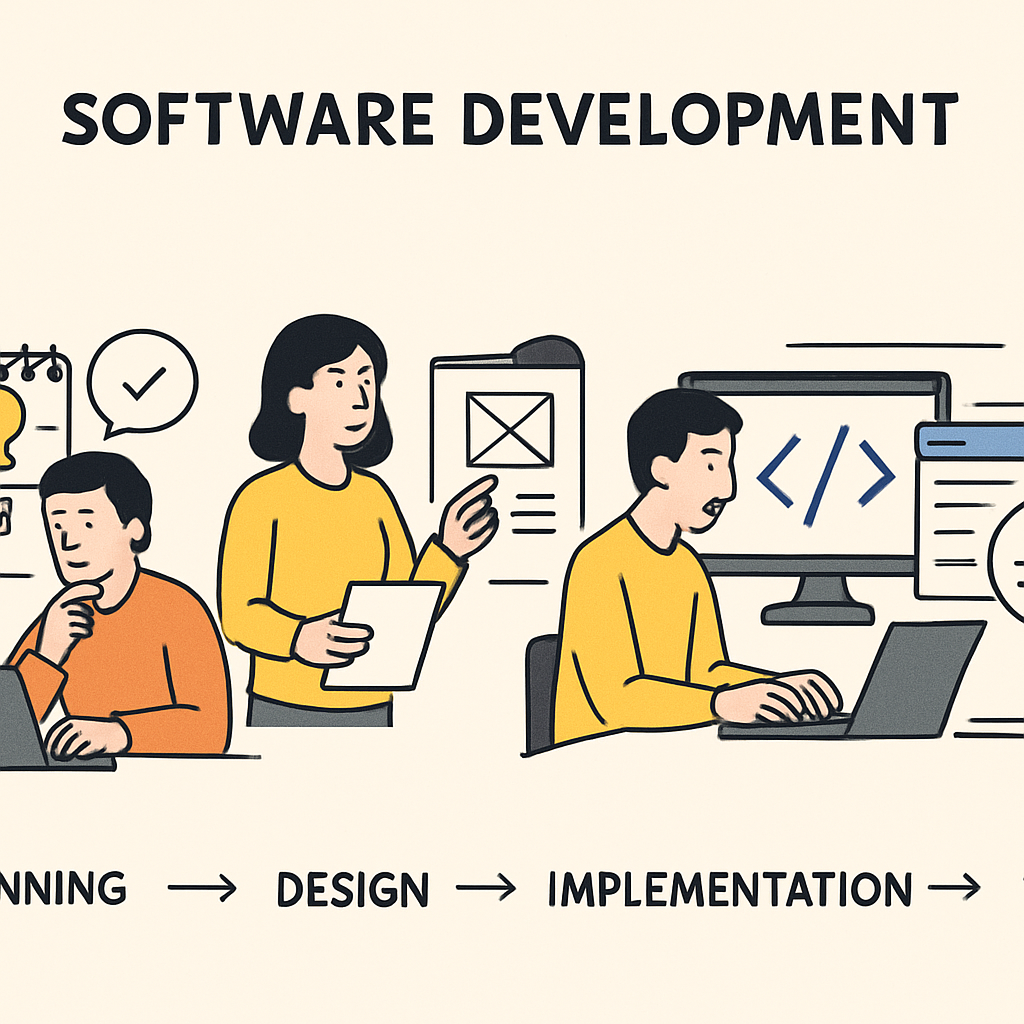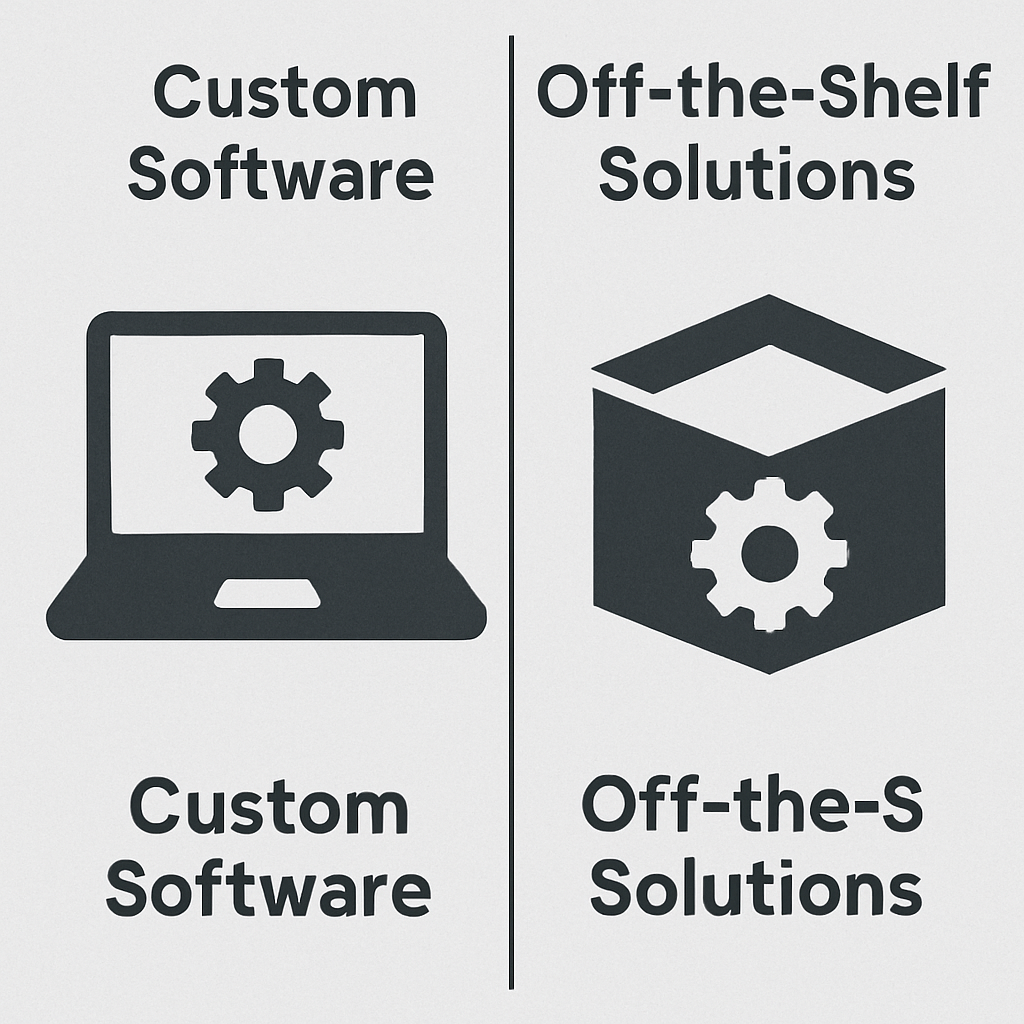Custom software development is a game-changer for businesses. It offers tailored solutions that meet specific needs. Unlike off-the-shelf software, custom solutions provide flexibility and scalability.
Businesses can gain a competitive edge with unique features. Custom software enhances efficiency by automating processes. It integrates seamlessly with existing systems, boosting productivity.
Choosing the right development partner is crucial. Expertise, experience, and communication are key factors. Custom software can be more cost-effective over time, despite higher initial costs.
Security is a top priority in custom software development. It ensures data protection and compliance. Custom solutions can be designed for various platforms, including web, mobile, and desktop.
The global demand for custom software is growing. Businesses seek personalized digital solutions. Custom software development is a strategic investment for long-term success.
What is Custom Software Development?
Custom software development involves creating tailored software to address a business’s specific requirements. Unlike generic software, it offers unique features not available in standard solutions.
This process involves several stages, each crucial to the final product. These stages typically include:
- Requirement gathering
- Design and prototyping
- Development and testing
- Deployment and maintenance
Custom software development allows businesses to have software that aligns perfectly with their operations. It ensures a personalized approach, considering the nuances of each business model.
Businesses benefit from greater flexibility and scalability. Custom software can adapt as the company evolves. This adaptability is vital in today’s fast-paced digital landscape.
The collaboration between the development team and the client is essential. Effective communication helps refine the software to meet specific goals. Regular feedback loops ensure that the final product is precisely what the business envisions.
Ultimately, custom software development empowers businesses to innovate and excel. It transforms technology from a functional tool into a strategic asset.
Custom Software vs. Off-the-Shelf Solutions
When choosing software, businesses often weigh custom software against off-the-shelf solutions. Each has its unique advantages and trade-offs.
Custom software offers unparalleled personalization. It’s designed to meet your specific business needs. This results in higher efficiency and alignment with internal processes.
In contrast, off-the-shelf solutions provide a quicker and often cheaper start. They are ready-made, with features applicable to a broader audience. Their functionality is typically well-tested and documented.
Benefits of Custom Software:
- Tailored to your unique business operations
- Scalable as your needs grow
- Offers a competitive edge with unique features
Benefits of Off-the-Shelf Software:
- Quick implementation
- Generally lower initial cost
- Regular updates and support are often included
The choice depends largely on long-term goals and specific requirements. Custom solutions might cost more initially but can yield greater value over time. Off-the-shelf solutions are great for rapid deployment but might not fit perfectly.
Understanding your strategic objectives is key. Businesses must assess current needs versus future growth. These insights will guide the best software decision.
Key Benefits of Custom Software for Business
Custom software provides distinct advantages tailored to individual businesses. These benefits often extend beyond what generic software offers.
One key benefit is increased efficiency. Custom applications automate repetitive tasks specific to your operations. This frees up valuable time for employees.
Scalability is another major advantage. As your business grows, your software can adapt without a complete overhaul. This saves both time and money in the long run.
Additionally, custom software can provide a competitive edge. It allows for unique features that your competitors may not have, enhancing customer satisfaction.
Advantages of Custom Software:
- Tailored solutions for specific business processes
- Seamless integration with existing systems
- Enhanced security tailored to your industry needs
Impact on Business:
- Streamlined operations and improved productivity
- Better data collection and analysis capabilities
- Adaptability to changing market demands
Custom software also supports improved decision-making. With tailored data insights, leaders can make more informed choices. These insights are often more relevant than those from standard software.
Moreover, custom solutions improve flexibility. Adjustments can be made easily as business needs evolve. This agility ensures that your software continues to meet your changing objectives.
In summary, custom software is a strategic investment that aligns technology with business goals. It’s designed specifically to support your unique processes and growth plans.

Types of Custom Software Solutions
Custom software solutions cater to diverse needs and challenges across industries. These solutions are crafted to meet specific business requirements.
One type is enterprise software, which integrates various functions like finance and HR. It streamlines complex organizational processes into a single platform.
Customer relationship management (CRM) systems are another type. They enhance customer interactions by managing and analyzing customer data efficiently.
E-commerce platforms are often customized to handle unique sales processes and inventory requirements. This ensures a seamless shopping experience for customers.
Common Types of Custom Software:
- Enterprise Resource Planning (ERP) systems
- Customer Relationship Management (CRM) systems
- E-commerce platforms
- Supply Chain Management software
- Business intelligence tools
Supply chain management software is critical for businesses reliant on logistics. Custom solutions optimize inventory and distribution networks effectively.
Additionally, business intelligence tools offer powerful data analytics. They enable businesses to extract meaningful insights from their data for strategic decisions.
These diverse types of custom software address specific operational needs, offering tailored functionality. This specialization enhances overall business performance and user satisfaction.

The Custom Software Development Process
The custom software development process is a structured approach that ensures the creation of effective solutions.
This journey begins with requirement gathering, where specific business needs are identified. This stage sets the foundation for a successful project.
Next is the design phase, where ideas transform into detailed prototypes and mockups. These serve as blueprints for development.
Once designs are approved, the development stage commences. This involves coding the software according to specifications.
Testing follows development to identify and fix any issues. This step guarantees a high-quality, error-free application.
Deployment is when the software goes live. It marks the transition from development to user environment.
Maintenance is an ongoing process post-launch. It involves updates and support to adapt to changing needs.
Key Steps in Development:
- Requirement Gathering
- Design & Prototyping
- Development & Testing
- Deployment & Maintenance
Each stage plays a crucial role in ensuring the software meets business goals. Understanding this process helps manage expectations and outcomes.

Requirement Gathering & Discovery
Requirement gathering is the initial step in creating custom software. It involves understanding the client’s needs and objectives.
Discussions are held with stakeholders to gather detailed insights. This stage ensures all essential features and functions are covered.
A comprehensive requirements document is prepared. It serves as a guide for the development team.
Key Activities in Requirement Gathering:
- Stakeholder Interviews
- Documentation of Business Needs
- Analysis of Current Systems
Clarity in this phase ensures the software will address all key business challenges effectively.
Design & Prototyping
Design and prototyping bring concepts to life. Design focuses on visual layout and user interactions.
Mockups and prototypes are developed to demonstrate functionality. These allow stakeholders to visualize the end product.
Prototypes are tested for user feedback. Iterations ensure the design meets user expectations.
Essential Design Steps:
- Visual Design Creation
- Interactive Prototyping
- User Feedback Collection
This phase bridges user expectations with technical possibilities.

Development & Testing
The development stage is where coding begins. Developers build features in line with design specifications.
Each module undergoes unit testing to catch errors early. This step ensures components function correctly.
System integration testing follows. It verifies that all parts work together seamlessly.
Development & Testing Highlights:
- Code Implementation
- Unit Testing of Components
- System Integration Testing
Testing ensures the software performs reliably under varied conditions.

Deployment & Maintenance
During deployment, the software is made available to end-users. It is a critical transition that requires careful planning.
User training often accompanies deployment to facilitate adoption. This ensures users are comfortable using new features.
Ongoing maintenance addresses emerging bugs and security updates. This phase is vital for long-term software health.
Post-Deployment Activities:
- Software Launch to End-Users
- User Training and Support
- Ongoing Maintenance and Updates
Proper deployment and maintenance guarantee the software remains effective and responsive to changes.

Choosing the Right Custom Software Development Company
Selecting the right custom software development company is pivotal for project success. It’s crucial to partner with experts who understand your business needs.
Begin by evaluating their experience and expertise. Look at their portfolio and past projects to gauge their capabilities.
Client reviews offer insights into reliability and quality. They highlight strengths and potential weaknesses in service delivery.
Assess the company’s communication style. Clear, open communication is crucial for a smooth collaboration.
Inquire about their development methodologies. Agile and DevOps are often preferred for their flexibility and faster turnaround.
Consider their post-launch support. Ongoing maintenance and updates are essential for long-term software effectiveness.
Key Factors to Evaluate:
- Experience and Portfolio
- Client Reviews and Testimonials
Critical Service Aspects:
- Communication and Collaboration
- Development Methodologies
Choosing the right partner requires thorough research and careful consideration. It ensures your software project aligns with business objectives.

Engagement Models: In-House vs. Outsourcing vs. Hybrid
Choosing the right engagement model for custom software development is a strategic decision. Each model has its unique benefits and drawbacks.
In-house development ensures a dedicated team focused solely on your project. This model offers greater control over the development process.
However, in-house teams may lack diverse expertise and can incur higher costs. Hiring and retaining skilled developers is often challenging.
Outsourcing offers access to a broad talent pool and can be more cost-effective. It allows businesses to leverage global expertise without long-term commitments.
Communication and coordination across different time zones can be a challenge with outsourcing. It’s crucial to establish clear communication channels.
A hybrid model combines the advantages of both in-house and outsourcing approaches. This model allows businesses to maintain control while accessing external expertise as needed.
Key Considerations for Each Model:
- In-House: Control, aligned focus, higher costs
- Outsourcing: Global expertise, cost-efficiency, communication challenges
- Hybrid: Flexibility, control, access to additional skills
Choosing the right model depends on your project’s specific requirements and resources.

Custom Software Development Services: What’s Included?
Custom software development services encompass a wide array of offerings designed to meet unique business requirements. These services begin with a thorough understanding of client needs.
One of the primary services is requirement analysis. This involves gathering and defining the software specifications. It forms the foundation for successful development.
Design and prototyping are crucial steps in the development process. They help visualize the software’s look and feel before final implementation. This phase ensures alignment with business objectives.
After design, the next phase is development and coding. Expert developers build the software according to the specified design and architecture. This step requires meticulous attention to detail.
Finally, testing and quality assurance ensure the software meets all functional and performance standards. Ongoing maintenance and support are also included to keep the software running smoothly.
Key Inclusions in Custom Software Services:
- Requirement Analysis
- Design and Prototyping
- Development and Coding
- Testing and QA
- Ongoing Maintenance and Support
Choosing a development partner with comprehensive offerings can lead to a successful software solution.

Industry-Specific Custom Software Solutions
Custom software solutions cater to various industries, offering targeted functionalities and enhancements. Each industry has distinct needs which bespoke solutions can address effectively.
In healthcare, custom applications improve patient management and automate medical records. These solutions ensure compliance with healthcare standards and regulations, enhancing patient care quality.
The finance sector benefits from custom software by optimizing data analytics and ensuring secure transactions. Custom software also supports compliance with stringent financial regulations.
Retail businesses use custom software to manage inventory and enhance customer experiences. Tailored solutions support point-of-sale operations and integrate seamlessly with e-commerce platforms.
In manufacturing, custom software streamlines production processes and improves supply chain efficiency. These solutions provide real-time monitoring and control across operations.
Examples of Industry-Specific Custom Software:
- Healthcare: Patient Management Systems
- Finance: Secure Transaction Platforms
- Retail: Inventory Management Solutions
- Manufacturing: Supply Chain Optimization
Selecting a custom software development partner experienced in specific industries ensures technology aligns with business goals.

Technology Stacks and Methodologies
Choosing the right technology stack is crucial in custom software development. It impacts the software’s performance, scalability, and maintenance.
A technology stack includes the programming languages, frameworks, and tools used in software development. The stack should align with the project’s requirements and future growth plans.
Common technology stacks for web development include the MEAN stack (MongoDB, Express.js, Angular, Node.js) and LAMP stack (Linux, Apache, MySQL, PHP). For mobile applications, React Native and Flutter are popular choices.
Methodologies also play a vital role in ensuring successful project outcomes. Agile is favored for its iterative approach, fostering collaboration and flexibility. DevOps integrates development and operations for continuous delivery and deployment.
Selecting suitable technology stacks and methodologies depends on project goals, team expertise, and industry demands.
Common Technology Stacks:
- Web: MEAN, LAMP, MERN
- Mobile: React Native, Flutter
- Desktop: Electron, .NET

Security and Compliance in Custom Software Engineering
Security is a top concern in custom software development. Protecting data and ensuring compliance with regulations are essential steps.
Custom software must adhere to industry-specific standards. This ensures the software meets legal requirements and gains user trust.
Businesses need to incorporate security measures from the start. This includes secure coding practices and data encryption. Regular security audits should be conducted to identify and fix vulnerabilities.
Compliance with regulations like GDPR or HIPAA is crucial. Non-compliance can result in heavy fines and reputational damage. Collaborate with a development partner knowledgeable about compliance to mitigate these risks.
Key Security Practices:
- Secure coding and testing
- Data encryption
- Regular security audits
- Compliance with industry standards

Cost Factors in Custom Software Development
The cost of custom software development can vary greatly. Understanding the factors that influence these costs is critical for budgeting.
Project complexity is a major driver of cost. More complex systems require additional resources and time to develop.
The choice of technology stack also impacts cost. Cutting-edge technologies may require specialized skills, increasing expenses.
Factors like team size and project duration also play a role. Larger teams or longer timelines usually mean higher costs.
It’s important to consider the total cost of ownership. This includes not just development, but also maintenance and updates over time.
Key Cost Factors:
- Project complexity
- Technology stack
- Team size
- Development timeline

How to Maximize ROI with Custom Software
Maximizing return on investment from custom software is crucial. Effective planning and strategic implementation are key factors for success.
Clearly defining business goals can help tailor the software to your needs. Aligning software features with these goals boosts efficiency and effectiveness.
Regularly updating and maintaining the software ensures it remains relevant. This helps prevent obsolescence and keeps your investment sound.
Engaging end-users during development can improve adoption rates. User-friendly interfaces and functionality can enhance user satisfaction and productivity.
Tips for Maximizing ROI:
- Define clear business goals
- Align features with business needs
- Ensure regular updates
- Prioritize user engagement

Trends and Innovations in Custom Software Development
The custom software development landscape is constantly evolving. Businesses are harnessing new technologies to stay ahead in the competitive market.
Emerging trends like artificial intelligence and machine learning are becoming integral. These technologies enable more personalized and intelligent software solutions.
Cloud computing is another game-changer, offering scalability and flexibility. It allows businesses to deploy applications swiftly and cost-effectively.
The adoption of agile and DevOps methodologies enhances collaboration. They improve the speed and quality of software delivery by fostering teamwork.
Notable Trends:
- Artificial Intelligence and Machine Learning
- Cloud Computing Solutions
- Agile and DevOps Implementation

How to Select the Best Custom Software Development Partner
Choosing the right partner for custom software development is pivotal. It can significantly impact the success of your project.
Start by assessing the potential partner’s expertise and experience. Look for a diverse portfolio that matches your industry needs.
Communication is key in any partnership. Opt for a company that values clear and continuous communication throughout the development process.
Client reviews and testimonials can provide valuable insights. They reflect the company’s reliability and customer satisfaction levels.
Considerations When Choosing a Partner:
- Expertise and industry experience
- Communication style and transparency
- Client testimonials and reviews

Frequently Asked Questions about Custom Software Development
Custom software development often raises several questions. Understanding common inquiries can clarify the process for businesses.
One frequently asked question is about cost. Custom solutions can be more expensive initially but offer long-term savings.
Businesses also wonder about development timelines. The complexity and scope of the project influence the duration.
Security is a critical concern. Custom software can be tailored to meet stringent security protocols and compliance needs.
Another common query involves post-launch support. Most companies provide ongoing maintenance and support for their software.
Common Questions:
- How much does custom software development cost?
- What is the typical timeline for a custom project?
- Is ongoing support included with custom software solutions?
Conclusion: Is Custom Software Right for Your Business?
Custom software offers unique solutions tailored specifically to your business needs. It can enhance efficiency, flexibility, and competitive advantage in a dynamic market.
Consider your business objectives and challenges. Custom solutions align technology with your strategic goals, offering long-term benefits over off-the-shelf products.
Evaluate your resources and potential ROI. If your business requires tailored features or has specific processes, custom software might be the most effective choice for sustained growth and innovation.






